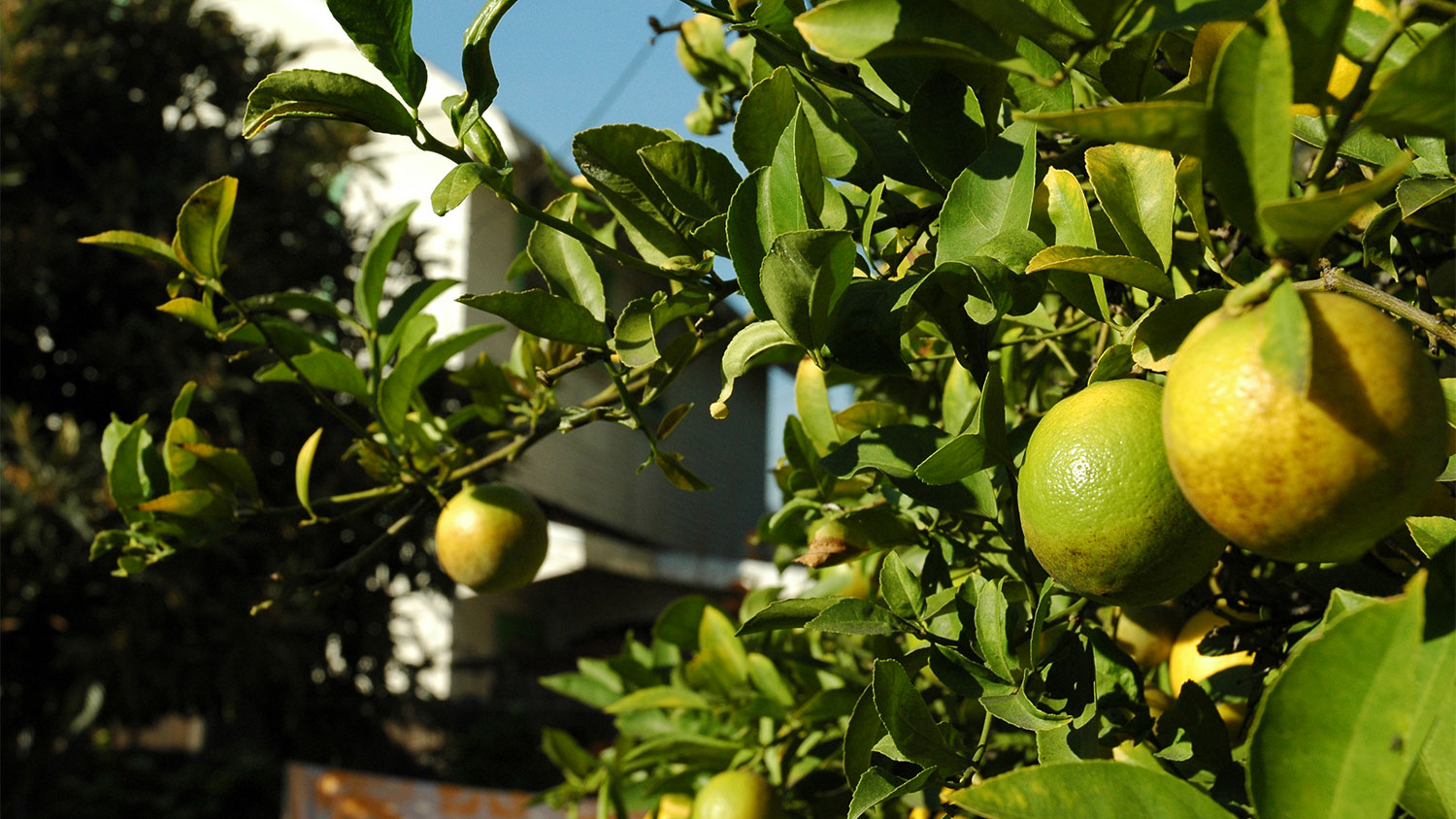Q. I am always overjoyed when I see free fruit trees on public land (and new websites/apps are making this easier than ever!). But I can’t bring myself to eat it without knowing anything about the soil in which it was grown. Can you speak to the safety of eating publicly grown produce from urban areas? I worry about all the same things they say to watch out for when making an urban garden – heavy metals, PAHs, arsenic, etc.
Christina B.
Los Angeles, CA
A. Dearest Christina,
The minute they hit the shelves, I taste my first cherries of the season. I cannot contain my happy dance when I see the blackberries start to fruit on neighborhood bushes. Plums, peaches, and apricots set me dreaming of pie every night and cobbler every morning. It’s all I can do not to go on an all-fruit bender every year from May ‘til September. And if all those glorious fruits come from free trees and bushes around town, rather than flown in from Chile? Be still my heart!
In short, I share your joy, Christina. And because we both live in major cities, complete with all their traffic, industry, and who-knows-what substances in the soil, water, and air, I also share your concern about chowing down on said glorious fruits. But I come bearing great news: Experts agree that city fruits are generally quite safe to eat.
That doesn’t mean that urban soils are all pure and pollutant-free, mind you. Far from it: Urban dirt may contain such alarming ingredients as lead (public enemy number one when it comes to soil contaminants), arsenic, heavy metals, PAHs (polycyclic aromatic hydrocarbons, for the non-chemistry majors), petroleum, and pesticides. These nasties are the legacy of years of city pollution — vehicle exhaust, lead paint flakes, industrial waste, agricultural runoff, leaking gas tanks, you name it — and tend to linger in the soil. So contamination is certainly a concern for urban gardeners who are going to be digging directly in the dirt (if that’s you, head over here for some precautions you can take).
Luckily for us fruit lovers, though, contaminants tend to stay where they are — in the soil. Most trees don’t accumulate pollutants, and even if they do, the problem is in the roots, not the fruits. The largest risks associated with urban produce comes from ingesting soil from your hands (or from your tools or shoes to your hands), not from eating the produce itself. Fruits don’t usually have direct contact with the ground, so plucking a ripe peach or two from a park tree is very low-risk. As a rule, I’d avoid eating from trees growing in certain dirty sites, such as, say, a former chemical plant. But generally, experts give urban harvesting the thumbs’ up.
You do have to worry a bit about airborne contaminants, which can settle on the skins of your future fruit-salad ingredients. But that’s easily avoided by (1) not picking fruits growing next to busy roads (to avoid car-related yuckiness) and (2) thoroughly washing all publicly picked produce (how many pecks of public produce did Peter Piper pick, anyway?). If you want to be super-duper safe, rinse fruits before you bring them inside and again before eating. And if the tree is growing in the sort of manicured public park that includes playing fields or swathes of lush lawn, it’s worth calling the park district to see if any pesticides are sprayed in the area before harvesting.
You probably already know the many benefits of snacking on urban fruits, Christina: You’re getting them at the peak of freshness. The carbon footprint is practically nonexistent (especially if you’re walking or biking to fill your bushel). You’re reducing waste by enjoying a food that might otherwise have fallen to the ground and rotted. Besides, picking fruit is just plain fun.
So harvest away! I’ll be with you in spirit — you’ve just reminded me that salmonberry season here in Seattle is right around the corner.
Juicily,
Umbra



